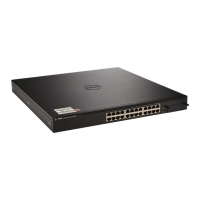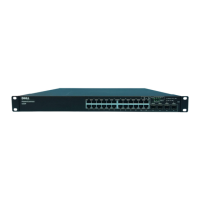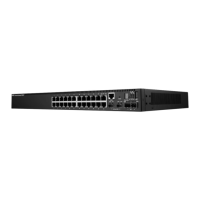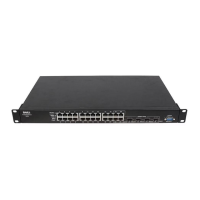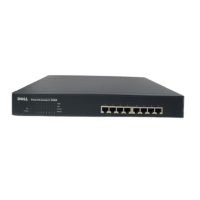454 Configuring Port Characteristics
What Interface Types are Supported?
The physical ports on the switch include the out-of-band (OOB) interface
and 10-Gigabit Ethernet switch ports. The OOB interface supports a limited
set of features and is for switch management only. The Ethernet switch ports
support many logical features that are often supported by logical interfaces.
The switch supports the following types of logical interfaces:
• Port-based VLANs — For more information, see
"Configuring VLANs
" on
page 551
.
• VLAN routing interfaces — For more information, see
"Configuring
Routing Interfaces
" on page 855
.
• Link Aggregation Groups (LAGs), which are also called port channels) —
For more information, see
"Configuring Link Aggregation
" on page 791
.
• Tunnels — For more information, see
"Configuring Routing Interfaces
"
on page 855
.
• Loopback interfaces — For more information, see
"Configuring Routing
Interfaces
" on page 855
.
What is Interface Configuration Mode?
When you use the CLI to configure physical or logical characteristics for an
interface, you must enter Interface Configuration Mode for that interface. To
enter the mode, type the keyword interface followed by the interface type and
additional information to identify the interface, such as the interface number.
To enter Interface Configuration mode for a physical switch port, the
following information is required:
• Type — For physical switch ports, the type is 10-Gibabit Ethernet
(tengigabitethernet or te) for 10,000 Mbps Ethernet ports.
• Stack member number— The
PowerConnect 8000/8100-series switches
are standalone, non-stacking switches, so the member number is always 1.
• Module (slot) number—For the
PowerConnect 8000/8100-series
switches
, the slot number is always 0.
• Port number—The number assigned to the port. For front-panel ports the
port number is written above or below each port. Odd-numbered ports are
on the top row, and even-numbered ports are on the bottom row. The port
numbers increase from left to right.
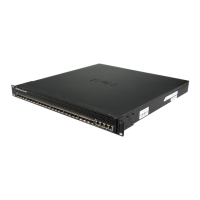
